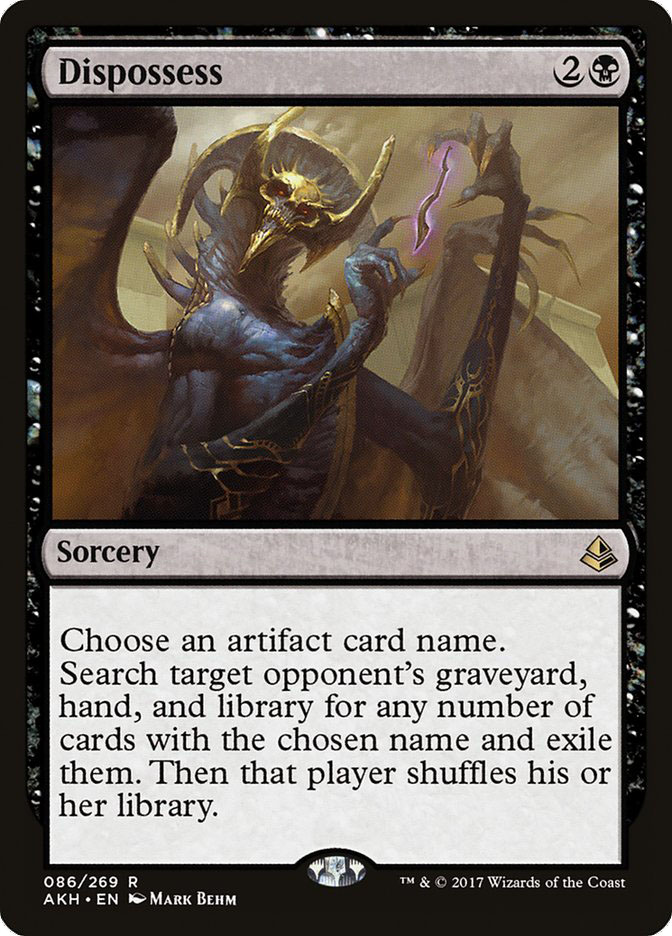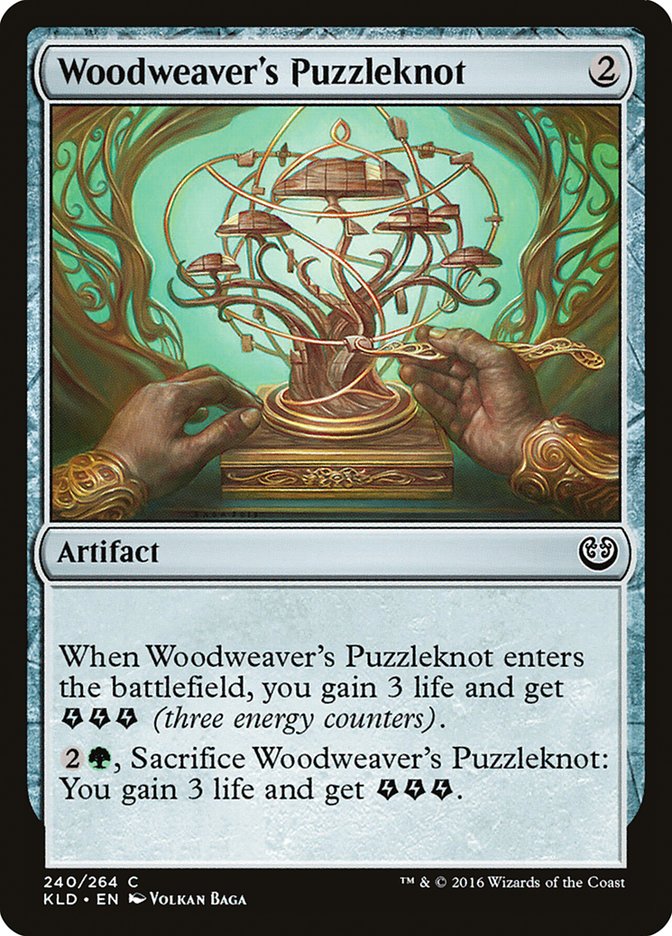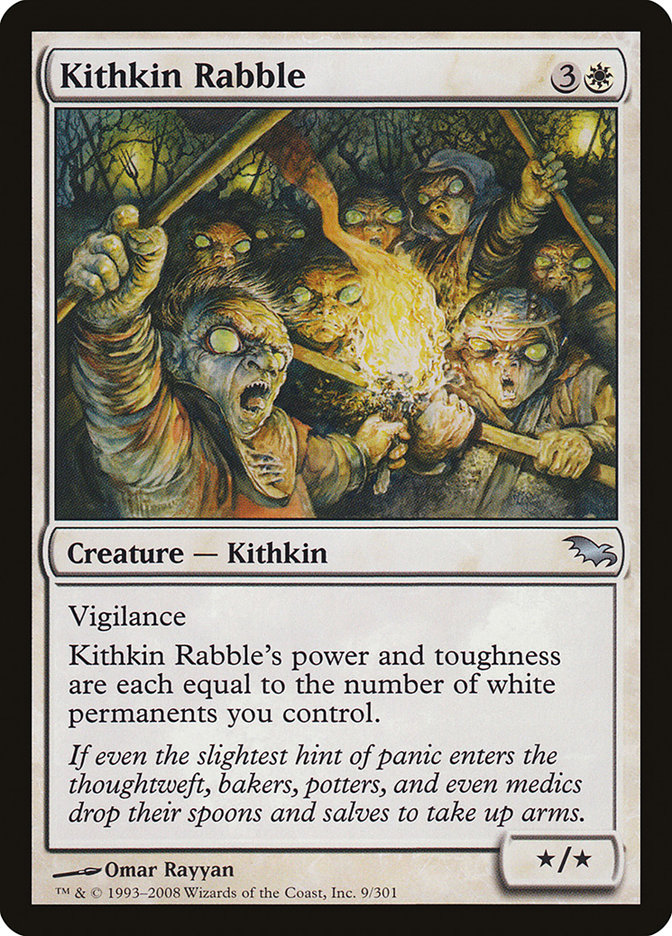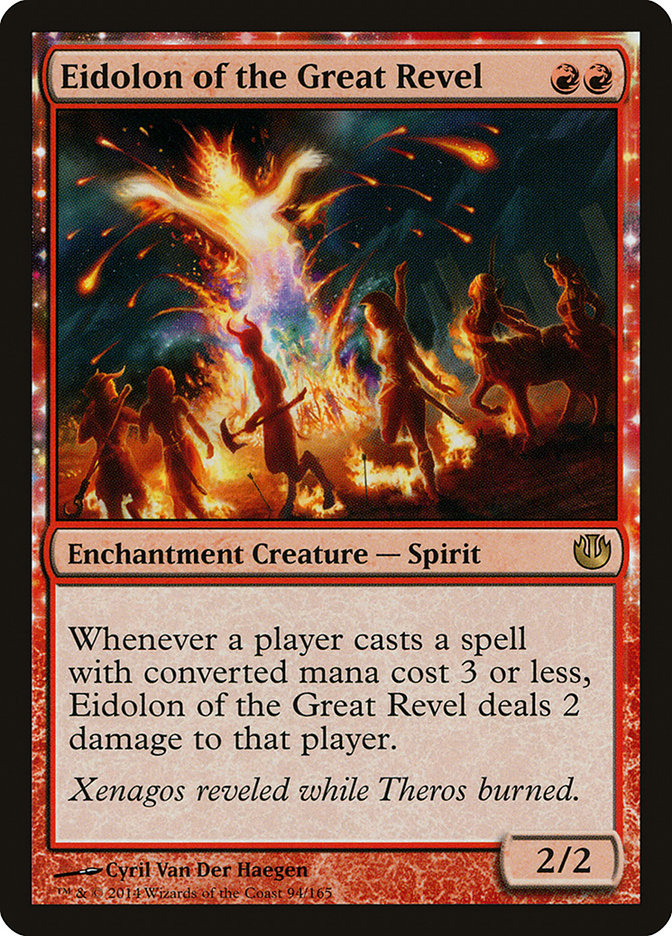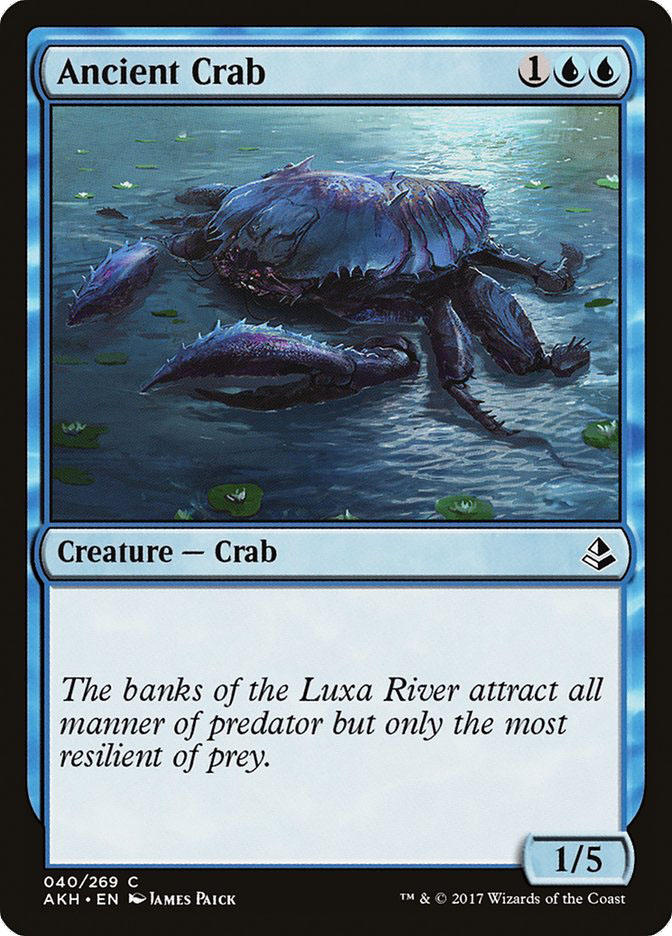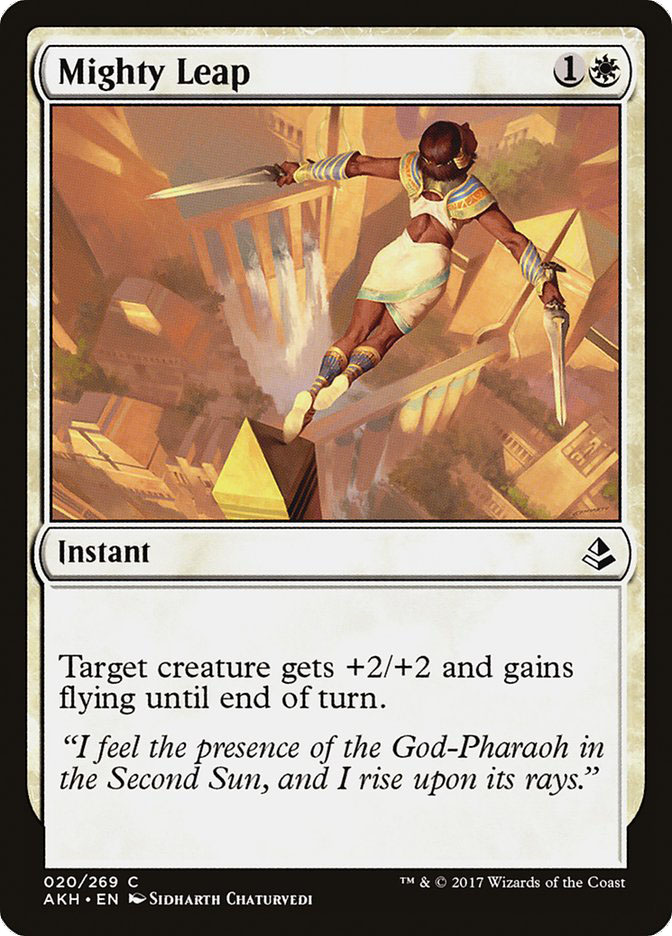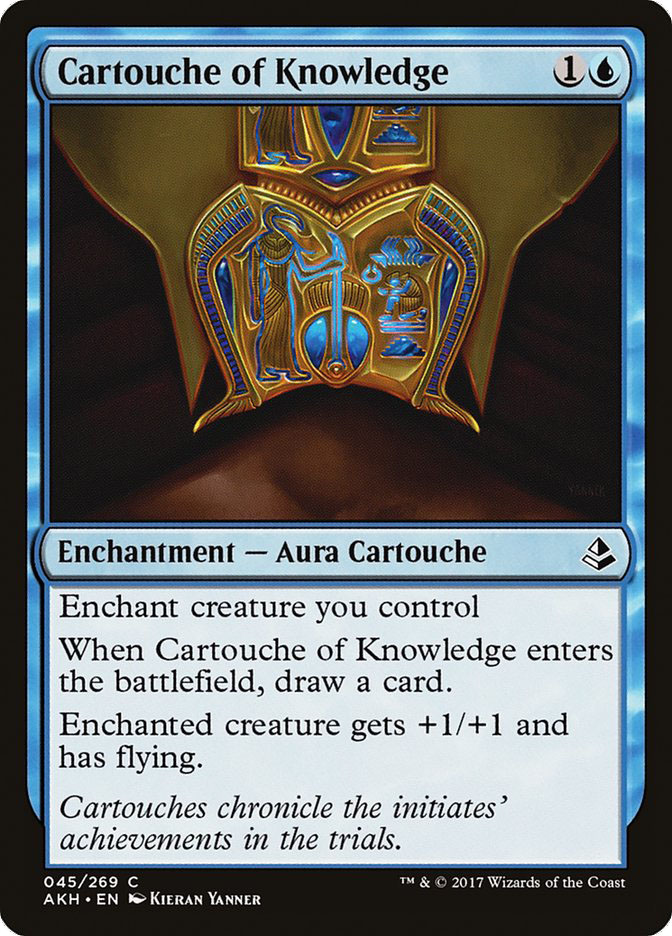I don’t even know how to begin this article. There are just so many things racing through my head right now, and every attempt to organize my thoughts has been ineffective. It’s just so difficult to come down to reality when I can just stay on this winner’s high instead. I won #SCGBALT, then #GPOMAHA, locked Platinum along the way, almost certainly qualified for #MTGCHAMP for the third year in a row, and got to be Cedric’s “Player of the Day” two weeks running on Twitter to top it off. Emma Handy stole that from me last year when I won #SCGKNOX, but I’m not salty or anything.
It’s easy to say life’s going pretty well right now, but that’s not going to be enough source material to get me through an entire article. I guess I’ll just spew out all these internal monologues randomly, and hopefully it all makes sense in the end.
It’s been a while since I’ve gotten into the nitty-gritty of one of the decks I’ve been playing. That’s not due to laziness or a lack of sympathy for those interested in my decision-making, but simply the fear of not knowing enough about what I’m talking about. My biggest fear as a content producer for this game is being wrong and filling my audience’s head with nonsense. Last week I still felt a little self-conscious about going “deep” with Grixis Death’s Shadow, as I wasn’t confident in my academics pertaining to the deck. This time around, however, I nailed it. Not only with the list itself, but also how I sideboarded against the field. For now I believe this to be the best way to build Temur Aetherworks, as I was happy with everything I did this past weekend.
Creatures (8)
Planeswalkers (2)
Lands (23)
Spells (27)

First off, Whirler Virtuoso sucks, and it’s so freeing to finally say that with confidence. I’ve always hated that card in this deck, but so many external circumstances kept me from completely cutting it from my builds. From people saying how important the card is against U/R Control and Mardu Vehicles, to the deck needing more energy producers, everyone seemed to be confident in their opinion. It wasn’t until I discussed the deck in depth with Paul Dean that I got the confidence to just get rid of the card completely, and since then I haven’t looked back.
The list was designed with a new metagame in mind. It was easy to predict that those who wouldn’t play Temur Aetherworks would instead play strategies designed to prey on it. Decks like B/G Energy, Jeskai Vehicles, and U/W Flash were all on our minds as we looked for a list of Temur Aetherworks that could function against a field targeting the deck. We still wanted to respect Zombies, but we would have sacrificed the matchup if we had to.
This brings up an interesting topic when it comes to choosing decks.
So many of the game’s best players choose not to bring Temur Aetherworks this past weekend. Most of them still did well, given they were, in my opinion, at a disadvantage. Their reasoning mostly revolved around not wanting to play such a high-variance deck, but at the same time they knew they wouldn’t be able to overcome the deck’s sheer power when it showed up.
In Round 13, I played Sam Pardee. He was on B/G Delirium and just resolved Dispossess against in me in Game 2. While sifting through my deck, he brought up that I was his first opponent that didn’t keep in any copies of Woodweaver’s Puzzleknot against him. Shocked, I didn’t know what to think from that comment.
Clearly he was just making an observation and not trying to trick me into bringing them back in for Game 3. Most likely he was just complimenting me for understanding the matchup better than all of his previous opponents.
After the match it got me to thinking. Why would people keep in Woodweaver’s Puzzleknot against any form of B/G aggro? Clearly they will have some number of Dispossess and Transgress the Mind. Aetherworks Marvel is no longer a reliable path to victory against them, so drawing copies of Woodweaver’s Puzzleknot and Ulamog, the Ceaseless Hunger becomes more of a liability in sideboarded games. Now, you can’t take out that many copies of your Eldrazi, but nowhere in the handbook does it say you need Woodweaver’s Puzzleknot to activate Aetherworks Marvel.
Putting two-and-two together got me realizing that most Temur Aetherworks pilots didn’t actually spend that much time innovating for the weekend. I imagine most of the deck’s pilots came into the tournament with the mentality that they weren’t in control of their own destiny, almost as if, by choosing Temur Aetherworks, they were effectively spinning the roulette wheel and hoping to be on the winning side of variance.
With that narrative, it’s easy to predict that most players had an apathetic approach to the tournament, which is why we saw so many Temur Aetherworks pilots fall to the high-profile players on B/G variants, even though I saw them as easy matchups.
If this is what happened, then there’s a great lesson to be learned. Sure, Aetherworks Marvel strategies have some built-in variance that causes certain things to be out of the pilot’s control, but that doesn’t give those playing it a pass on preparation. You don’t just get to be lazy and blame any shortcomings on running poorly in a perceived “bad format.” There always will be variables out of your control, but also many that can be manipulated. All you can do as a player is give yourself the best chance to succeed, and right now people don’t seem to be doing that.
I too am sick of the state of Standard, but also over talking about its health.
Wizards is well aware of the situation. They’re doing what they need to make sure this never happens again. That’s their job.
Mine is to win with the cards they put in front of me.
I might not always agree with their final decisions, but those opinions aren’t helping me on the battlefield. I don’t get a free pass because I too think Aetherworks Marvel shouldn’t exist alongside the Eldrazi. Instead of complaining, I pull myself up by my bootstraps. Then I realize that’s a terrible metaphor that doesn’t mean what those who use it think it does, and then I get to work on giving myself the best chance possible each time I register for an event.
Now, it’s important to state that it probably wasn’t easy to come to the same conclusions Paul and I did for those who did put forth effort over the weekend. I just would have liked to see more innovation out of the weekend, and less complaining about how bad everything was.
Creatures (9)
Planeswalkers (1)
Lands (23)
Spells (27)

So, on the topic of innovation: we killed it. We found the perfect sideboard for the weekend. UW/ Flash, B/G variants, and Temur Energy all had one glaring hole that we wanted to exploit. Whether it was holding up counterspells, taking turns off to cast hand disruption, or casting preemptive Manglehorns to slow the deck down, all these decks choose to sacrifice pressure for disruption. The best counter to these strategies was to find cards that would allow us to transition away from being a combo-control deck and play more to the midrange capabilities that an energy shell can provide. The extra time our opponents would give us as they insulated themselves against Aetherworks Marvel would be used to simply cast Ulamog, the Ceaseless Hunger the old-fashioned way.
That’s the main reason why we played a 24th land in the sideboard, which, to me, was the most interesting aspect to deckbuilding this week. Normally I tend to sideboard out a land when games will slow down, and I’ve expressed this thoroughly in previous articles about deck building. This time around was much different. Given the deck’s necessity to resolve Ulamog, the Ceaseless Hunger, playing additional lands was needed as I would no longer be playing a combo deck that was exploitable in that regard. Constantly transitioning into more of a midrange deck meant even the land count would have to shift.
For those interested, here’s how I sideboard the deck. It’s pretty comprehensive, but also malleable. I suggest making changes if you deem them worthy to your particular situations.
Temur Aetherworks with Servant of the Conduit
On the Draw
Out:
In:
On the Play
Out:
In:
Temur Aetherworks “Mirror”
On the Draw
Out:
In:
On the Play
Out:
In:
B/G Energy Aggro
On the Draw
Out:
In (plus one flex):
On the Play
Out:
In:
B/G Delirium
On the Draw
Out:
In:
On the Play
Out:
In:
Marvelous Temur with Longtusk Cub
On the Draw
Out:
In:
On the Play
Out (plus two flex spots):
In:
Jeskai Vehicles
On the Draw
Out:
In:
On the Play
Out:
In:
Zombies
On the Draw
Out:
In:
On the Play
Out:
In:
The tournament itself went about as smoothly as I could ever have imagined. I drew well, rarely got punished for my mistakes, and I constantly got rewarded for the tight plays I did make. Textbook story you hear from the winner in most circumstances, truth be told. What set this weekend apart from others, though, was how much fun I had with coverage when I wasn’t playing matches. I got to get in the booth with Marshal Sutcliffe to examine my Round 10 match against Matthias Hunt, which was a blast and something I hope they do more often moving forward.
After the event, they invited me out for dinner and drinks to watch Game 2 of the NBA Finals, and eventually a team draft. Now, at this point, I was rather toasty, since, ya know, I just won a tournament. I also was exhausted but powering through the night, given that my flight home was at five in the morning, making it easier to just stay up rather than sleep for only a few hours.
They thought it was a good idea to make Reid Duke and me captains, and then have us pick our teams. Reid won the coin flip, so he got first pick. He took the on-paper best choice, which was Marshall Sutcliffe, but little did he know that the true ringer was Brian David-Marshall. Now, I’m not saying Brian is a better player than Marshall, but you should just always go with the Jersey Boy, since that area has cultivated so many of the best players the game has to offer. Marshall may have adopted team draft, but Brian was born in it.
I was on Reid’s left for the draft, which is easily the worst seat I could have found myself in at one in the morning. I’m also normally terrible at Magic once the beer’s been flowing a little bit and am the least-invested person in this draft. That’s because anyone who does coverage is bloodthirsty for some Magic after working around it all weekend. Pretty much I found myself in the lion’s den, and I was fully aware of it.
Fast forward to Round 1. I’m sitting across from Marshall with what could best be described as “enough blue and white cards.” I’ve never intended for an Ancient Crab to take a Mighty Leap, but stranger things have happened in life.
A Grand Prix winner’s cards.
Game 1 started off particularly strange. As I developed a battlefield designed for a “no rush twenty” game, Marshal simply played Forest after Forest. Knowing there was more to his plan, I got in as much damage as I could muster. Finally his plan came together in the form of Giant Spider. I had to take drastic measures to defeat the unbeatable foe. A Winds of Rebuke put the deadly Spider back in his hand, and a Glorybringer in his graveyard. He quickly picked up his five Forests, admitting defeat, and left the table in search for his sideboard. Now, I didn’t know how to properly sideboard for the mono-green Glorybringer matchup, so I didn’t.
Luckily for me, my opening hand in Game 2 had both of my good cards. Turns 2 and 3 were spent putting Gust Walkers on the battlefield while Marshall once again developed his green mana, showing just how conscious he is of the environment. On turn 4, my two Gust Walkers stood against four untapped Forests. At this point I put a card from my hand face down on the table, and said to Marshall that I had a “read.” The card stayed there as the game progressed, and would do so until my intuition was proven.
About three turns later, Marshall found himself in a pickle. He didn’t have to appropriate tools to defeat my motley crew, and thus needed to rely on his deck to find him the answers. He tapped two mana and cycled a Stringing Shot. Before he could get his hand to his deck, I showed off my impressive slapjack skills by revealing the trap card I left on the table so many turns ago.
The lesson today, boys and girls, is that sometimes winning just isn’t enough when it comes to team draft.
My next journey is to #SCGCHAR, where I will do my best to take down another event. There will be talks of a back-to-back-to-back from coverage, but all I’m focused on is doing my best. All that added pressure isn’t why I play this game. I keep doing it to always be better than I previously was. My list of Grixis Death’s Shadow should hopefully by then be better, but I won’t know that for sure until I get back to work. For the time being, though, I’m going to enjoy a day or two away from the game and soak in the rays of success.
Just for a little while.



